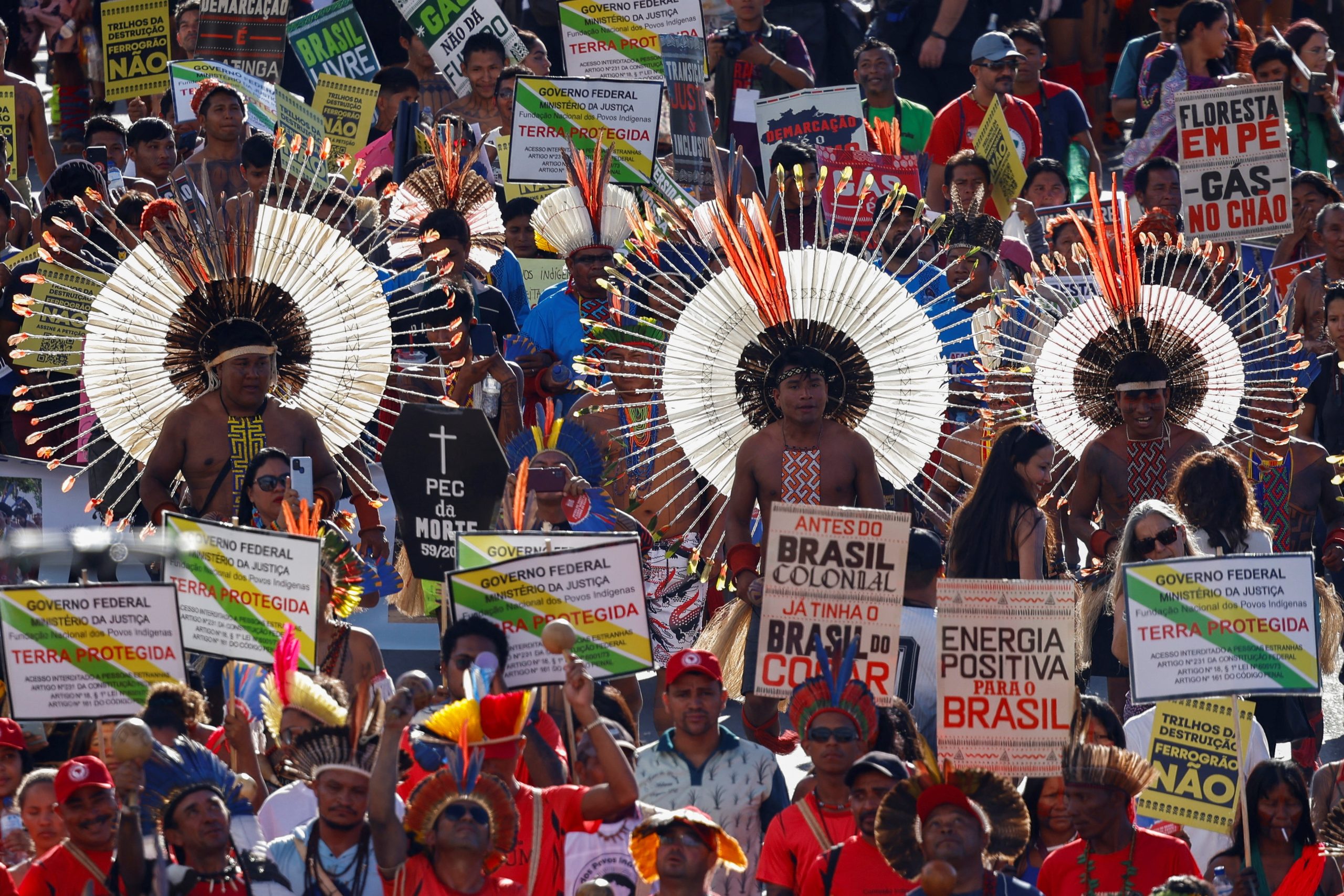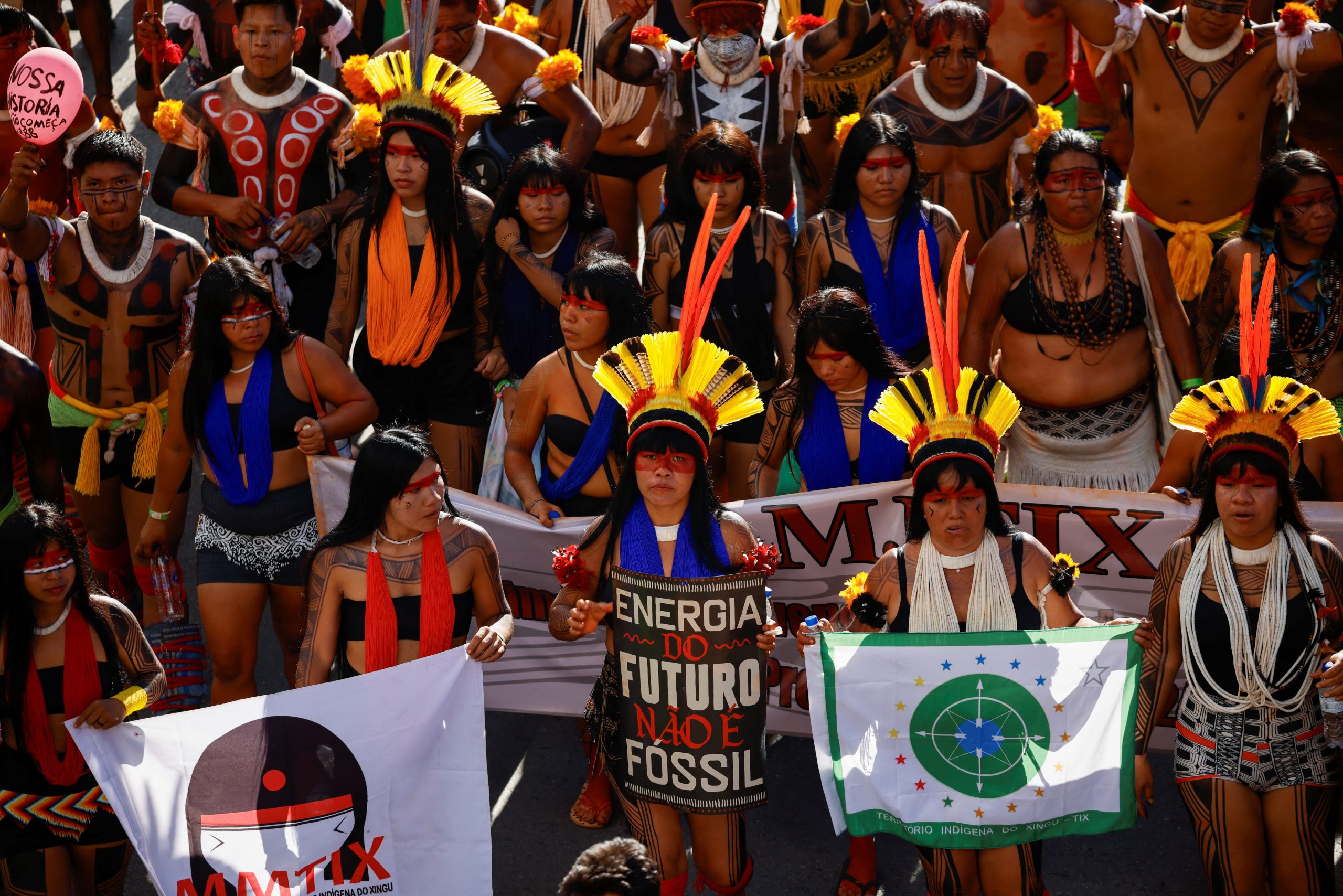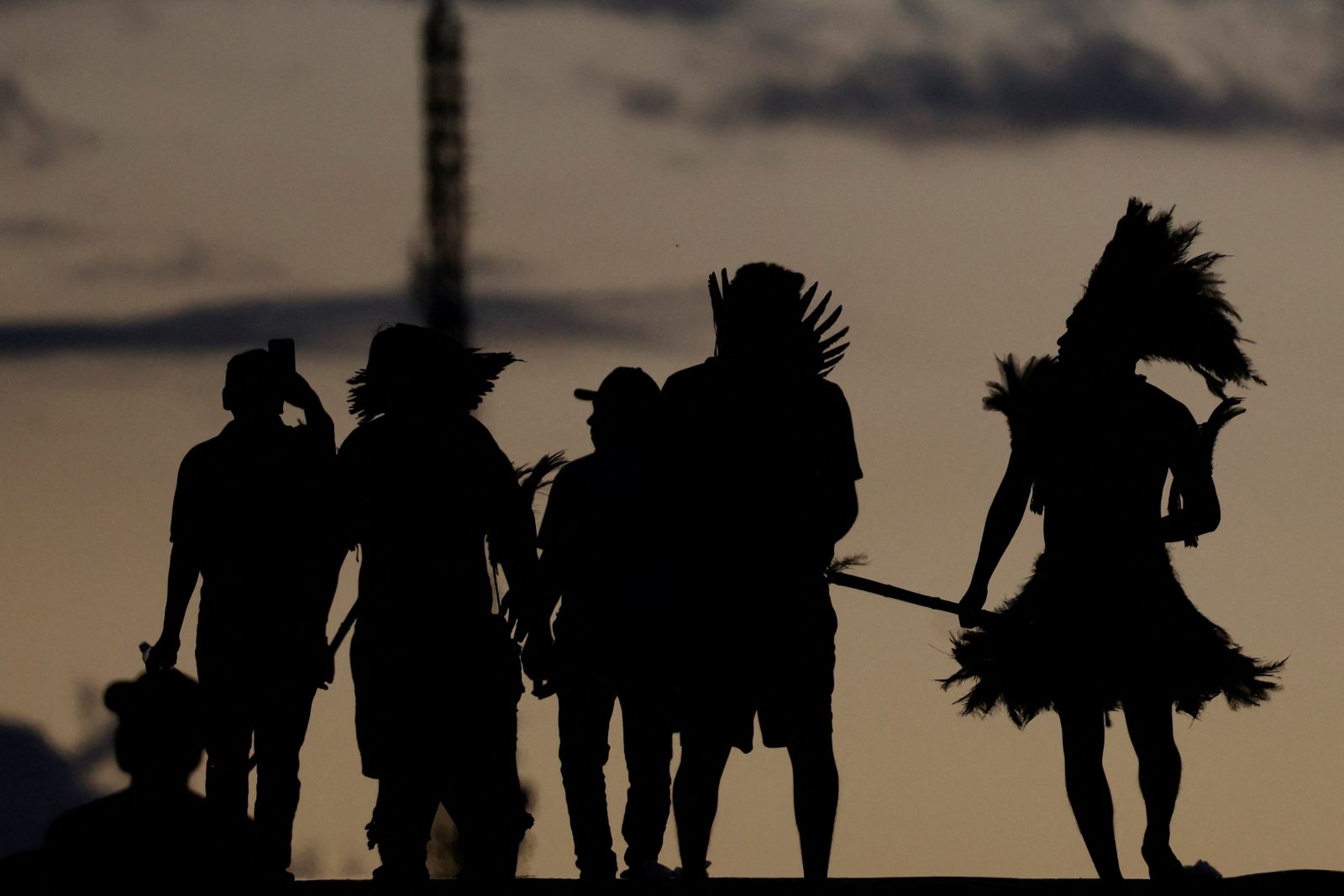In a powerful display of unity and defiance, several thousand Indigenous demonstrators took to the streets of Brazil’s capital, Brasilia, to voice their outrage against the government’s failure to safeguard their ancestral lands.
Led by Indigenous leaders, the marchers’ chants reverberated to the beat of drums as they converged on the seat of power, denouncing plans for a railway that poses a grave threat to their communities near the Tapajos river.
At the heart of the protest lies the proposed Ferrograo railway, a project met with vehement opposition from Indigenous groups who fear its construction will lead to irreversible environmental devastation.
The demonstrators, utilizing a symbolic tractor-trailer truck dubbed the “Rails of Destruction,” emblazoned with the names of multinational grain traders, made their message clear: the railway represents a perilous path toward deforestation and exploitation.
Protests Intensify Against Government’s Policies Threatening Ancestral Territories

Alessandra Korap Munduruku, a recipient of the Goldman environmental prize, condemned the Ferrograo as “the train of death” and a conduit for the interests of international corporations, rather than the well-being of Indigenous communities.
Kleber Karipuna, representing Brazil’s largest Indigenous umbrella organization APIB, underscored the lack of consultation with Indigenous peoples regarding the railway, which has already sparked a surge in land grabbing along its proposed route.
Despite their impassioned pleas, President Luiz Inacio Lula da Silva’s response fell short of their expectations, leaving Indigenous leaders disillusioned with promises unfulfilled. Chief Edinho of the Macuxi tribe lamented the government’s inability to address their pressing concerns, citing a pervasive influence of agricultural interests that impedes meaningful progress.

Central to the Indigenous grievances is the government’s failure to officially recognize Indigenous reservations, crucial for protecting their territories from encroachment by illegal loggers and miners.
Moreover, uncertainty looms over the fate of Indigenous lands as Congress deliberates bills that could further erode their rights and pave the way for commercial exploitation.

As the Indigenous struggle for land rights intensifies, they turn to the country’s Supreme Court for recourse, urging a ruling on the fundamental right to ancestral lands enshrined in the Constitution.
With their ancestral heritage and environmental stewardship at stake, Indigenous communities remain steadfast in their fight against encroaching threats to their way of life.







Leave a Reply